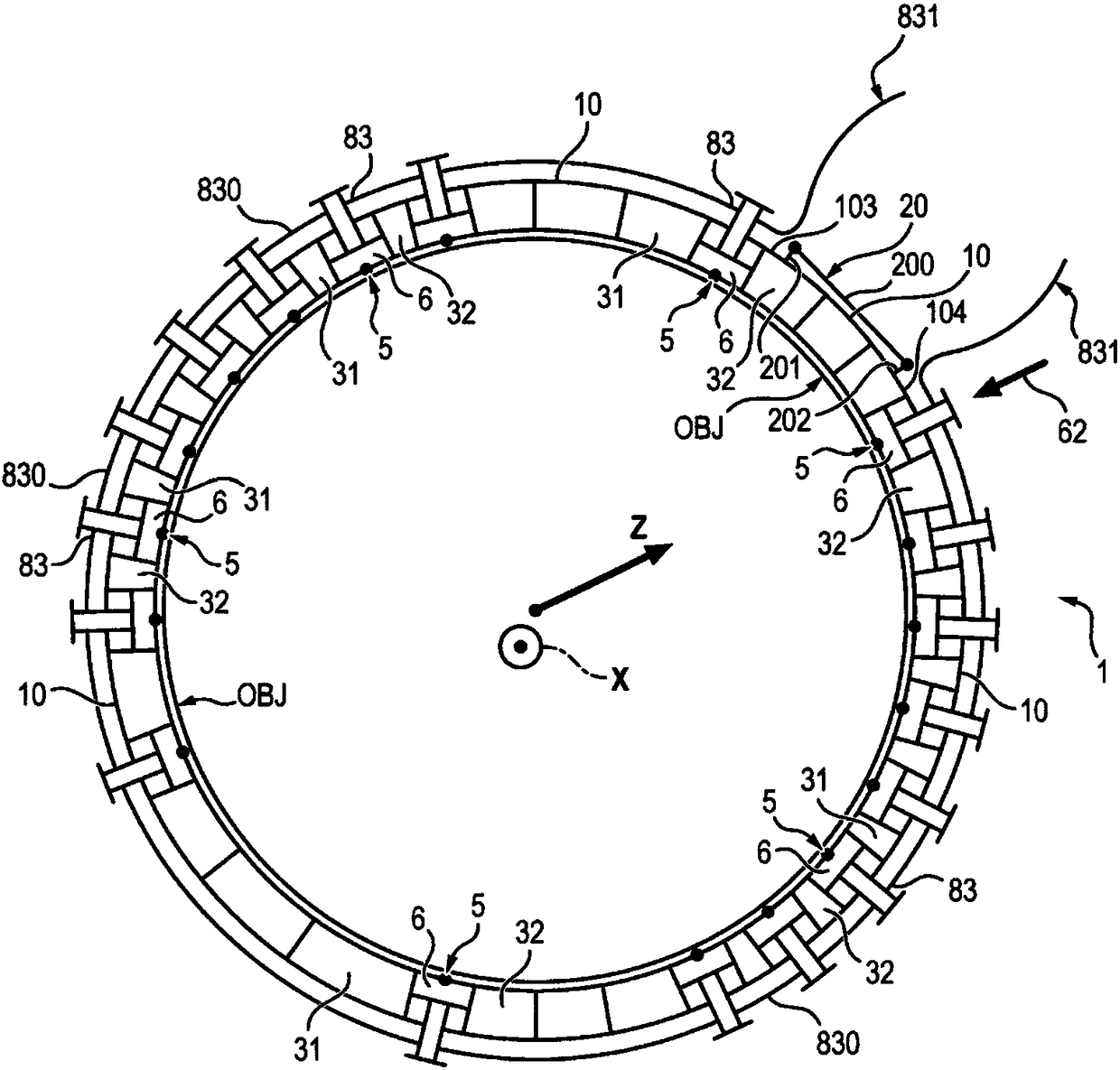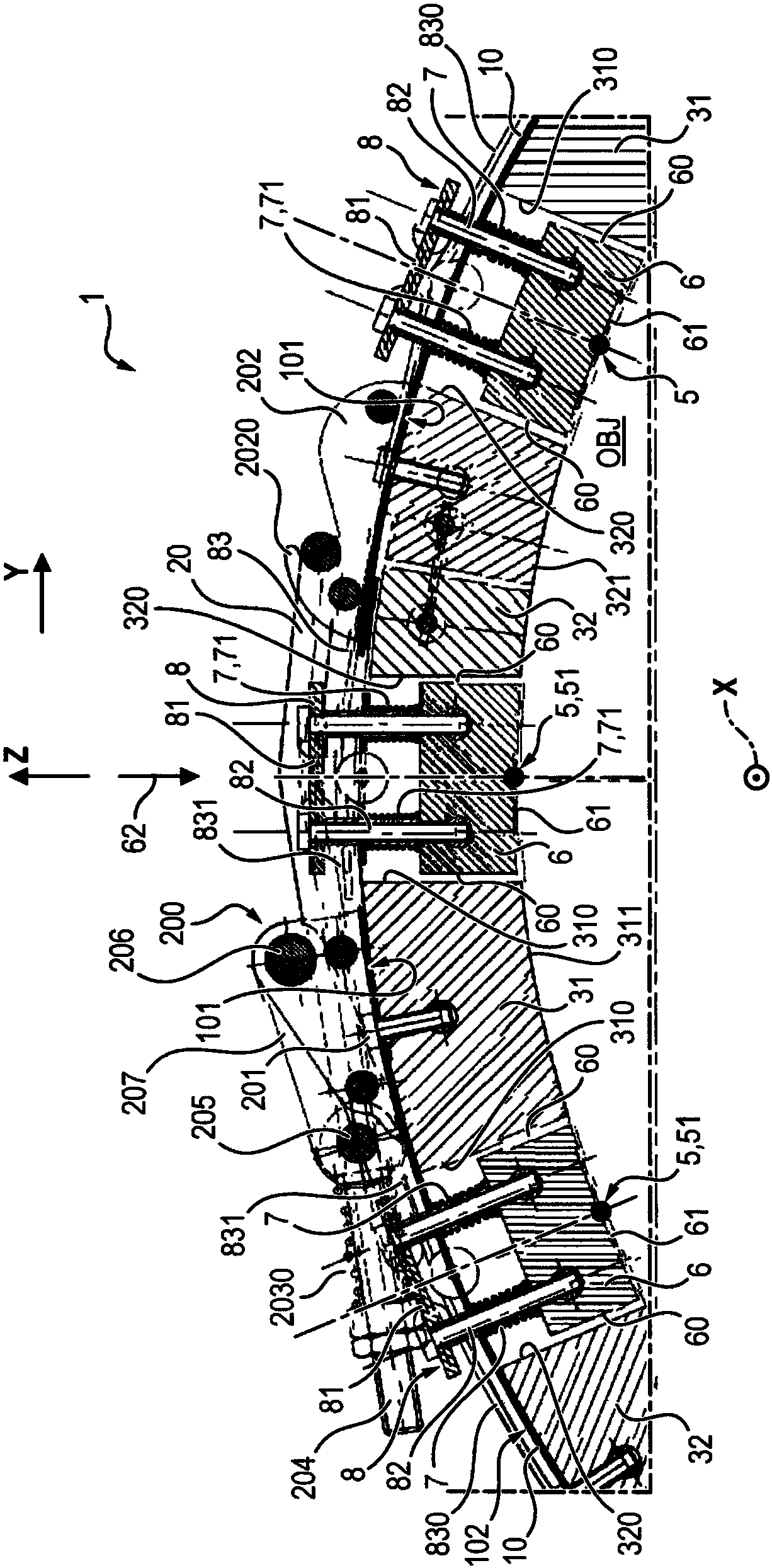Belt for measuring the temperature of an object
A technology for objects and temperature sensors, applied to parts of thermometers, thermometers, measuring devices, etc., can solve problems such as difficulty in obtaining administrative licenses, complicated technical documents, etc., and achieve good measurement accuracy
- Summary
- Abstract
- Description
- Claims
- Application Information
AI Technical Summary
Problems solved by technology
Method used
Image
Examples
Embodiment Construction
[0046]In the figures, a measuring tape 1 according to the invention is used for attaching at least one sensor 5 on an object OBJ. As described below, the object OBJ may eg be a fluid conduit OBJ such as eg a water pipe. One application of the invention is a belt for mechanically attaching one or more sensors 5 to a liquid or gas pipe as an object OBJ. The object OBJ is, for example, a water pipe of the main circuit of a pressurized water reactor (PWR) of a power station. The water pipe may be a high pressure pipe. The belt includes one or more temperature sensors 5 . Of course, the belt 1 may additionally comprise one or more sensors other than the temperature sensor 5 or only one or more temperature sensors 5 .
[0047] The belt 1 comprises a strip 10 having a perimeter for encircling an object OBJ such as for example a pipe.
[0048] In the figure, the object OBJ extends along the axial direction X, around which the strips 1 must be arranged. The strips 10 of the strip ...
PUM
 Login to View More
Login to View More Abstract
Description
Claims
Application Information
 Login to View More
Login to View More - R&D
- Intellectual Property
- Life Sciences
- Materials
- Tech Scout
- Unparalleled Data Quality
- Higher Quality Content
- 60% Fewer Hallucinations
Browse by: Latest US Patents, China's latest patents, Technical Efficacy Thesaurus, Application Domain, Technology Topic, Popular Technical Reports.
© 2025 PatSnap. All rights reserved.Legal|Privacy policy|Modern Slavery Act Transparency Statement|Sitemap|About US| Contact US: help@patsnap.com



